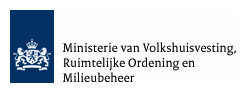WECF supports EU parliament on SCALE
call for restriction on 5 key chemicals; phthalates, endosulfan, chlorinated solvents....
25.02.2005 |Helen Lynn

calls for restrictions on 6 phthalates, clorinated solvents, mercury, cadmium and 3 organophosphate pesticides
WECF strongly suppports the EU resolution on SCALE
EU Parliament calls for restrictions on phthalates, clorinated solvents, mercury, cadmium and pesticides
and a strengthening of the EU Health and Environment Action Plan SCALE
Environment and Health Action Plan 2004-2010
http://www2.europarl.eu.int/omk/sipade2?PUBREF=-//EP//NONSGML+TA+20050223+SIT+DOC+WORD+V0//EN&LEVEL=3&NAV=X
European Parliament resolution on the European Environment & Health Action Plan 2004-2010 (2004/2132(INI))
The European Parliament,
- having regard to the communication from the Commission to the Council, the European Parliament and the European Economic and Social Committee on the European Environment & Health Action Plan 2004-2010 (COM(2004)0416),
- having regard to its resolution of 31 March 2004 on a European Environment and Health Strategy ,
- having regard to the action plan of the World Health Organisation adopted at the Fourth Pan-European Ministerial Conference on Environment and Health held in Budapest from 23 to 25 June 2004,
- having regard to Rule 45 of its Rules of Procedure,
- having regard to the report of the Committee on the Environment, Public Health and Food Safety (A6-0008/2005),
A. whereas the health risks presented by the causes of environmental pollution are one of the main concerns of European citizens and the European Union can no longer delay putting in place a real policy on environmental health safety,
B. whereas environment and nature can make a valuable contribution to public health in the European Union,
C. whereas the European Environment & Health Action Plan suggested by the Commission was planned to implement the European Environment and Health Strategy, also known as SCALE (based on Science, focussing on Children, aiming at raising Awareness, using Legal instruments and including constant Evaluation) (COM(2003)0338),
D. whereas risk assessment of vulnerable population groups in relation to environmental pollution, and children's vulnerability in particular, is insufficiently addressed in the Action Plan, contrary to what was decided in the SCALE Initiative,
E. whereas, however, in the European Union almost one in three childhood diseases occurring between birth and the age of 19 can be attributed to environmental causes, and more than 40% of this figure affects children under five,
F. whereas children are especially vulnerable to early or continuous environmental exposure, which can trigger chronic diseases that sometimes show up only decades later,
G. whereas other groups in society, including low-income or single-parent families and minority communities, also suffer disproportionate levels of health risk by virtue of their social or economic position, and whereas these groups also need specific consideration,
H. whereas children are not exposed to pollution in their home life to the same degree across Europe and any measure taken by the European Union in this area henceforth should also have the aim of tackling inequalities in child health,
I. whereas there has been a substantial and worrying increase over the last 20 years in the incidence of the following diseases:
- acute respiratory infections, the main cause of death in children under five, proven to be linked to outdoor and indoor air pollution,
- sometimes irreversible neurodevelopmental disorders, triggered by early exposure to dangerous substances such as lead, methylmercury, PCBs and some solvents and pesticides,
J. whereas, at its session of 1 and 2 June 2004, the Council adopted conclusions on childhood asthma and asked the Commission and Member States to take full account of the major public health challenge posed by childhood asthma,
K. whereas, under the present Action Plan, the priority for the first cycle (2004-2010) is better coordination and a more transversal approach in relation to activities of actors in the environment, health and research fields, the main aim being to improve knowledge of the impact of environmental pollution on health,
L. whereas this approach is intrinsically inadequate, since it ignores the many authoritative scientific studies published that show the correlation between environmental factors and the four priority diseases in the communication: asthma and childhood allergies, neurodevelopmental disorders, cancer and endocrine-disrupting effects,
M. whereas the use of legal instruments is completely absent from the Action Plan, contrary to what was foreseen under SCALE (its letter "L"),
N. whereas two out of three ultimate objectives of SCALE - the reduction of the disease burden by environmental factors, and the identification and prevention of new health threats caused by environmental factors - have not been taken up by the Action Plan,
O. whereas one of the three main pillars of the first cycle of SCALE - reducing exposure - is not to be found in the Action Plan,
P. whereas, however, both the European Parliament, in its abovementioned resolution of 31 March 2004, and the 52 European Health and Environment Ministers, in their Action Plan of 25 June 2004, reaffirmed the need for recourse to the precautionary principle in view of the excessively high costs and potential risks to our health and the environment that would result from a failure to act,
Q. whereas there has recently been an encouraging sign from the Competitiveness Council, which, by virtue of the precautionary principle, decided to ban the use of six chemicals of the phthalate family in the manufacture of children's plastic toys,
R. whereas this political will is clearly absent in the Action Plan, which nowhere suggests recourse to the precautionary principle, even when the impact on health of a source of pollution can easily be established, which applies primarily to infectious diseases and certain types of cancer,
S. whereas constant evaluation to 'verify the efficacy and cost-effectiveness of the actions in terms of the reduction of the environment-related health problems' needs to be implemented in the Action Plan, in line with what was foreseen under SCALE (its letter "E"),
T. whereas the provisions of the Aarhus Convention and Directive 2003/4/EC concerning public access to environmental information provide an ideal framework for the EU environment and health monitoring system; whereas what is needed now, therefore, is practical action,
U. whereas all measures aiming to train and interest medical professionals in the links between the environment and health are to be welcomed, as they provide a much-needed step towards raising the population's awareness of this new issue,
V. whereas the Commission has not included in the European Environment and Health Action Plan 2004-2010 any specific proposals regarding the financial resources required to implement the measures concerned;
1. Denounces the major downgrading in approach and ambition between the Commission's Environment and Health Strategy and what should be its implementation, the Action Plan; considers that the Action Plan can at best be seen as a Research Action Plan, which is unlikely in itself to reduce disease burden by environmental factors;
2. Regrets that, of the thirteen actions set out in the Commission's environment and health strategy for 2004 to 2010, only four are concerned with specific measures and that none of them set any targets;
3. Notes that there is no mention of immediately putting in place a biomonitoring system across the Union, based on the tracking of biological markers, in order to measure exposure to environmental contaminants, to be linked to the observation of effects by specialists in environmental medicine;
4. Considers that biomonitoring should contribute to a risk evaluation policy and should be used first and foremost in relation to infectious diseases, such as legionnaires' disease, and cancers caused by certain contaminants and for which 'cause and effect' can be more easily established: the link between asbestos and pleural cancer, between arsenic and kidney cancer and between some pesticides and leukaemia, lymph node cancer and prostate cancer;
5. Recalls that the absence of scientific certainty and the need to carry out additional research in the case of multi-causal diseases cannot be used as an excuse for delaying the introduction of essential and urgent measures to reduce children's and adults' exposure to environmental pollution;
6. Considers that, without prejudice to existing Community legislation and following the opinion of the relevant Scientific Committee, urgent consideration needs to be given to restricting the marketing and/or the use of the following dangerous substances, to which new-born babies, children, pregnant women, elderly persons, workers and other high-risk sections of the population are heavily exposed, as safer alternatives become available:
- six products from the phthalate family (DEHP, DINP, DBP, DIDP, DNOP, BBP) in domestic products for indoor use and in medical devices, except where such a restriction would have a negative impact on medical treatment,
- chlorinated solvents used in the manufacture of paint, coatings and polymers,
- mercury used in dental amalgams and in non-electrical or non-electronic measuring and monitoring devices,
- cadmium, in its different applications,
- three products from the organophosphate pesticide family (chlorpyriphos, diazinon and malathion) and endosulfan, an organochlorine pesticide, in all their uses;
7. Asks the Commission to give priority to research into the production and use of everyday consumer product categories that contain chemicals which can lead to allergies and cancer in humans;
8. Insists that, under the Commission's guidance, an epidemiological study should be carried out on children, along the lines of the National Children's Study in the United States, in order to monitor from the womb to adulthood the link between environment-related diseases and exposure to the main contaminants;
9. Stresses that any increase in animal testing under the Action Plan should be avoided and that full regard should be paid to the development and use of alternative test methods;
10. Calls on the Commission to ensure that all risk assessments that will be undertaken should specifically address the risks for foetuses, infants and children, where there is potential exposure of these particularly vulnerable groups;
11. Points out that the WHO is doing useful work on the environment and health and stresses the importance of international cooperation to ensure that the relationship between the environment and health is better investigated and effective measures are introduced;
12. Stresses the importance of educating and informing people about environment and health issues, in particular the benefits of a rich and diverse natural and built environment for people's physical and mental health and wellbeing; underlines that a healthy environment and lifestyle is not merely the result of an individual's lifestyle choices, a fact that is particularly true for disadvantaged population groups such as low-income citizens; considers that local information projects need to be supported, taking advantage of the knowledge that professionals in health care centres and hospitals and social workers have of local problems, in order to avoid a top-bottom approach in raising awareness of these issues;
13. Stresses that data must be collected in such a way that analyses can be made of how different groups in society are exposed to and affected by various pollutants; considers that greater knowledge of how women and men are exposed to and affected by various environmental pollutants, for example, is entirely dependent on gender-specific statistics;
14. Regrets that there is no mention of the mental and neurological health impact of pollution;
15. Calls for the Action Plan to define, as a matter of priority, acceptable environmental conditions for areas where children frequently spend long periods of time, such as nurseries, playgrounds and schools;
16. Supports all the proposed measures to facilitate public access to information and repeats its call for the creation of national registers to record over large geographical areas both the major emissions and the most prevalent diseases; considers that the Commission could use the new European geographical database, INSPIRE, for this purpose;
17. Stresses the need in this context for more effort to combat lifestyle-related ill-health caused by tobacco, alcohol, poor diet and lack of exercise;
18. Calls for research into the impact of new construction materials on health;
19. Considers that, in order to influence individual and collective behaviour on a large scale, it is essential for the Commission, in cooperation with the Member States, to introduce a system for labelling the environmental and health effects of construction products and materials;
20. Welcomes the Commission's willingness to continue to act to put an end to smoking in enclosed spaces or allow for designated physically separate smoking areas which are properly ventilated and encourages it to designate environmental tobacco smoke a class 1 carcinogen; however, asks the Commission to give priority to cross-border problems and to health problems that are clearly related to environment, and proposes that more funding be dedicated to research into chemical-related diseases, the results of which should be used for health improving actions;
21. Stresses that the quality of air inside buildings cannot be improved without a wide-ranging approach that takes into account the many sources of pollution: combustion apparatus, equipment and furniture and human activity, and calls on the Commission to draft a Green Paper dealing specifically with domestic pollution;
22. Calls on the Commission to include in the Action Plan a list of hazardous places of work and jobs, the monitoring of the effects on health and the definition of best practices in order to protect health;
23. Asks the Commission to promote vigorously a new initiative that has been launched in some Member States, i.e. the setting up of mobile units named 'environmental ambulances', which aims to perform a global environmental analysis to support risk assessment according to existing legislation and identify indoor pollutants likely to have adverse effects on human health;
24. Considers it essential to inform and train teachers and all other people who come into contact with children and infants in matters associated with environmental factors harmful to health;
25. Stresses the great importance of information concerning exposure to solar radiation (burns) and the related risk of developing skin cancer;
26. Calls for systematic scientific research into the impact of urban areas on health and well-being given that, in most countries, more than 70% of the population lives in towns and cities;
27. Insists that the Commission ensure proper implementation of existing European air quality legislation by Member States; asks the Commission to start infringement proceedings against those Member States which fail to ensure a high level of air quality for their citizens;
28. Repeats its call for particular attention to be paid to people living close to sources of pollution and calls on the Commission to launch an initiative to reduce industrial atmospheric emissions of toxic substances by 2010, the priority targets being dioxin, cadmium, lead, vinyl chloride monomer and benzene, according to percentages and reference years to be determined;
29. Stresses that the ability to detect and phase out hazardous chemicals will be a crucial factor in improving people's health;
30. Regrets the absence of an indicative financial statement in the Commission's proposed Action Plan, and the vague reference to the use of existing (financial) resources to implement the actions relating to the environment and health in the period 2004-2007;
31. Considers it essential to make full use of the financial resources provided for environmental and health measures under Decision No 1786/2002/?C adopting a programme of Community action in the field of public health (2003-2008) , to develop the results and experience arising from that programme and to avoid overlapping;
32. Considers that the collection of data in the context of the environment and health action plan should relate to fields not covered by Decision No 1786/2002/?C;
33. Calls on the Commission to present a specific financial statement on the implementation of priority actions for 2004-2007 and the forecasts for the implementation of integrated environment and health actions in the context of drawing up the new financial perspective of the EU;
34. Underlines that, in order to ensure the coherence and effectiveness of the Action Plan, it is necessary to begin to establish adequate funding for the 2004-2007 period immediately; adds that 'environment and health' projects should be a separate subject under the Seventh Research Framework Programme (2007-2010) and receive generous funding, which should not be less than EUR 300m given the huge expectations and socio-economic issues at stake in the field of environmental health;
35. Calls on the Commission to inform Parliament about modifications to the Action Plan, and the reasons therefor; keep Parliament informed on a regular basis about progress on implementing the Action Plan; and present to the European Parliament and the Council an annual report verifying the efficacy and cost-effectiveness of the actions of the Action Plan in terms of the reduction of environment-related health problems;
36. Instructs its President to forward this resolution to the Council and the Commission.


































